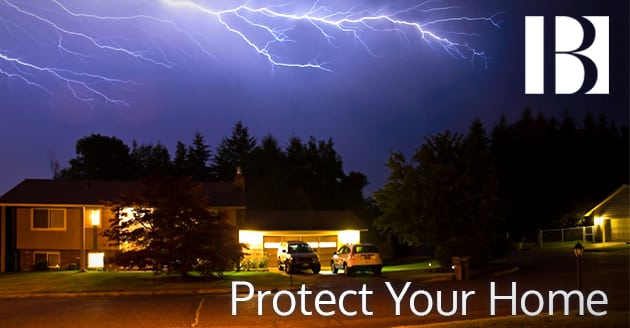With the warm weather outside, the last thing you’re probably thinking about is protecting your home from storms. But summer is a great time to take a few steps and get your home ready for the inevitable storms that will be coming as many contractors usually have reduced rates for the summer months when demand is low.
- Clear your gutters. The best time to clear out your gutters is in early autumn when the leaves are still dry and in early spring before the heavy rains begin (if you live in an area that has heavy spring rains). If you haven’t cleaned your gutters in awhile, a thorough cleaning during summer will make it easier to keep up once the weather changes.
- Check your roof. Look for shingles that are buckling, bubbling or curling up. While cleaning your gutters, if you noticed a bunch of shingle granules, then you might want to consider calling a roof inspector. The granules protect the shingles from damage from ultraviolet rays.
- Make sure windows and doors are caulked. If water levels rise near your home, having your windows and doors properly sealed will help keep water damage minimal. Of course, using sand bags with plastic sheeting is an inexpensive way to keep water out of your house during a severe storm or flood. There are other products designed specifically to protect your home against floods; talk to your local home improvement store for more information.
- Trim and inspect trees. Trim away any diseased or damage tree branches. Fallen tree limbs can become projectiles in high winds.
- Install a lightning rod. Some people think that by installing a lightning rod, you’re encouraging lightning to strike, but that is not the case. The chances of your home getting hit by lightning don’t increase. Rather, a lightning rod provides a path for the lightning to travel to the ground. Lightning rods do not protect against power surges, but they do protect buildings and houses from catching on fire.
- Protect electronics. During a thunderstorm, the best way to protect electronics is to unplug electrical equipment. Surge protectors will help protect electronics from power spikes from distant lightning strikes, but they rarely protect equipment from nearby lightning. In fact, lightning has been known to jump from surge protectors and cross an entire room, damaging anything or anyone in its way.
- Be prepared. Make sure you have an emergency kit ready and have an evacuation plan in place. And please don’t forget about your pets. Do not take unnecessary risks like running back into your home if it’s been destroyed or ignoring evacuation orders. Things can be replaced, people can’t.
FOLLOW US:




